|
Community Open House
Two drop-in style, open house's will be held this winter. The first event will take place at Meadow Park Middle School, from 5pm to 7pm Tuesday, February 12th. The second event will be held at the Cedar Mill Public Library, from 1pm to 3pm Saturday, February 22nd. Experts will be ready to answer your questions about the Japanese beetle project. Community Open House A drop-in style, open house was held at Sunset High School on Tuesday, February 19th. Attendees who came were able to ask questions of the expert team leading and supporting the project. Info Session: Japanese beetle in Washington County An online information session was held on Wednesday, February 13th. The Oregon Department of Agriculture welcomes your questions and comments. Find out how to contact the project team by visiting our Contact Page.
*Edited February 22, 2019 to include up-to-date opportunities to learn more. [Category Tags: Beetles in Oregon, Community Engagement, Japanese Beetle Basics, Japanese Beetle Threats, Larvicide - Acelepryn, Quarantine, Treatment, Yard Debris]
How can you identify a Japanese beetle? Japanese beetles have three main identifying characteristics:
The Japanese beetle is the only beetle in this area that has all three of these characteristics. There are a few other beetles in the area, both native and non-native, that are also metallic or otherwise look similar. Check out our Japanese beetle look alike guide to see who’s who. Examples of common beetles and pests that ARE NOT Japanese beetle: What to do if you come across some beetles? If you are within the treatment area and see adult Japanese beetles, then the ODA advises that you dispose of them in a container of soapy water. Using store bought insecticides will not significantly decrease Japanese beetle populations. If beetles are observed outside the treatment area, please put the specimen in a container or bag and email or call ODA at the contact information provided below. How long will this last?! Japanese beetles are already an issue being addressed in Washington County, and the issue can’t be solved overnight. It may take up to 5 years to eradicate the population entirely. How to help be part of the solution! Cooperation from those in the treatment area is critical to protect Oregon’s gardens and agricultural economy! Here’s what you can do to help:
[TAGS: Japanese beetle threat, Japanese beetle basics, Beetles in Oregon, Invasive species] Beetles can be moved in yard debris through the removal and movement of items such as sod and grass clippings. The risk of moving beetles is highest over the summer when adult beetles are emerging from the soil and moving around to feed and find mates. It is very important that beetles are contained within Washington County while treatment takes effect. Containment efforts are ramping up, with a quarantine on all yard debris still in effect and expanding in 2018. Residences will receive electronic notices from Oregon Department of Agriculture, along with other communications planned throughout the summer.
For more information about the quarantine check back on our Prevention page for the most recent information. [TAGS: Beetles in Oregon, Japanese beetle basics, Japanese beetle threat, Invasive species, Gardeners, Quarantine, Residents, Landscapers, Washington County, Yard debris] Wherever you find Japanese beetles here in the United States, you find extensive damage to plants. Many areas of the United States are infested with Japanese beetle. Above you can see a clear picture of the devastation caused by these infestations that we do not want in the Pacific Northwest.
The issue is that the beetle likes many of the plants that we like to eat and grow in Oregon. The small breeding population of Japanese beetle in Washington County threatens Oregon’s agricultural economy and natural ecosystems. In order to prevent a population explosion of Japanese beetle, Oregon Department of Agriculture proposes to treat the affected areas in the spring of 2018, continuing with annual treatments until 2021 if necessary. The Oregon Department of Agriculture has been lucky to learn from experts and invasive species managers from around the world who have a long history of combatting Japanese beetle. Find out about the unique proposed plan for treatment in Oregon, here: www.japanesebeetlepdx.info/treatment Photographs top left and right provided by Mike Reding, USDA, captured in Ohio, 2007. Bottom left and right provided by Whitney Cranshaw lab, Colorado. [TAGS: Japanese beetle basics, Japanese beetle threat, Invasive species, Gardeners] PLEASE NOTE: THIS POST IS AN ARCHIVE FROM 2017. Below is a sample of the plant damage that has been seen in the Cedar Mill area in the summer of 2017 as a result of the infestation of Japanese beetles. Damage on Rosa sp. from the Japanese Beetle. Photograph by Oregon Department of Agriculture. Japanese beetle caught feeding on a flower. Photograph by Oregon Department of Agriculture. Live beetle bites into unidentified plant leaf. Photograph by Oregon Department of Agriculture.
|
Header photograph by Whitney Cranshaw, bugwood.org
Categories
All
Archives
January 2024
|
|
This website is intended to provide readers with information that has been peer reviewed and produced from transparent and accountable sources. The Oregon Department of Agriculture is the lead agency for this project and maintains this website.
|
© COPYRIGHT 2018. ALL RIGHTS RESERVED.


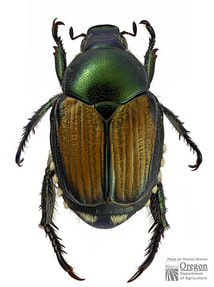
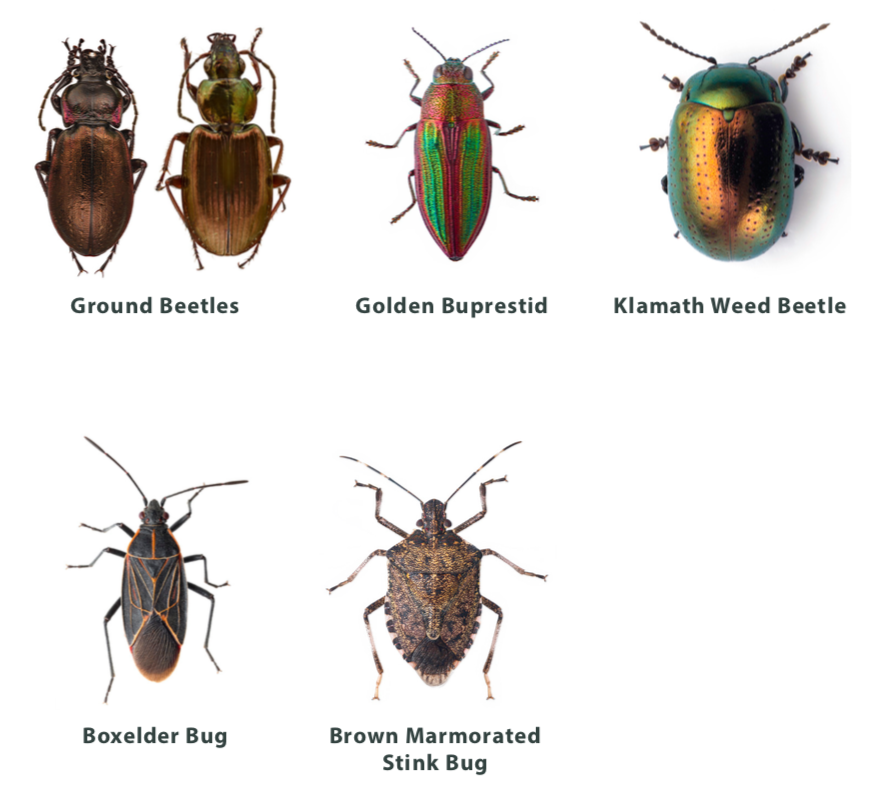
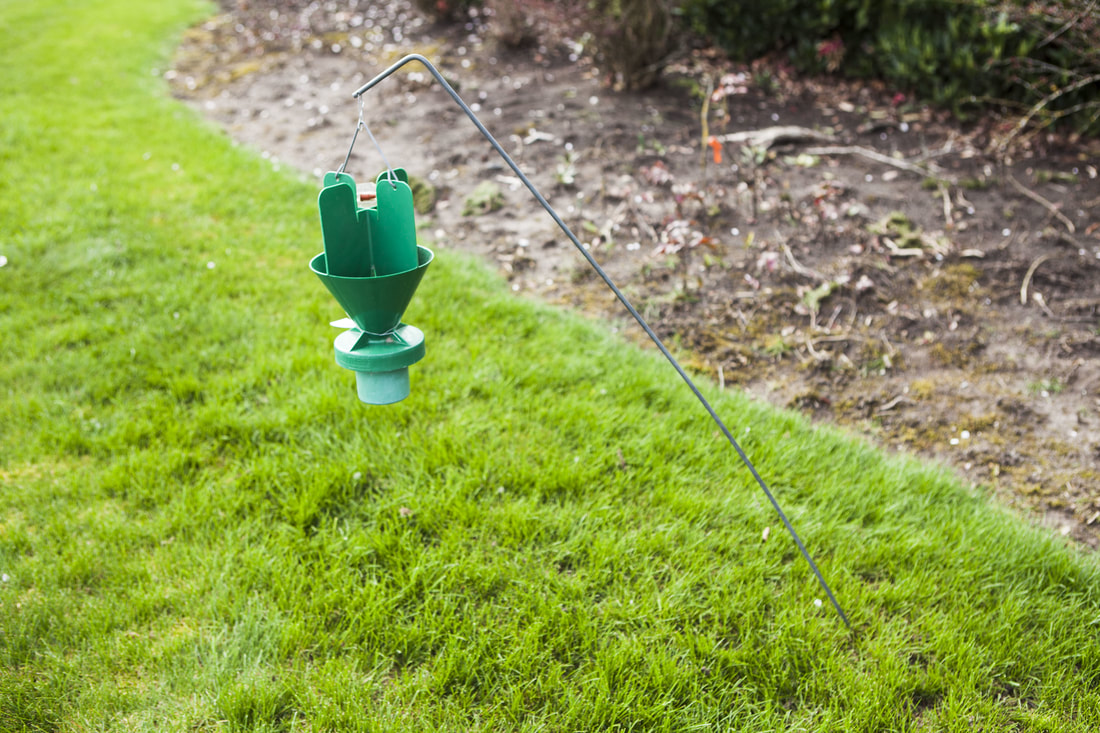
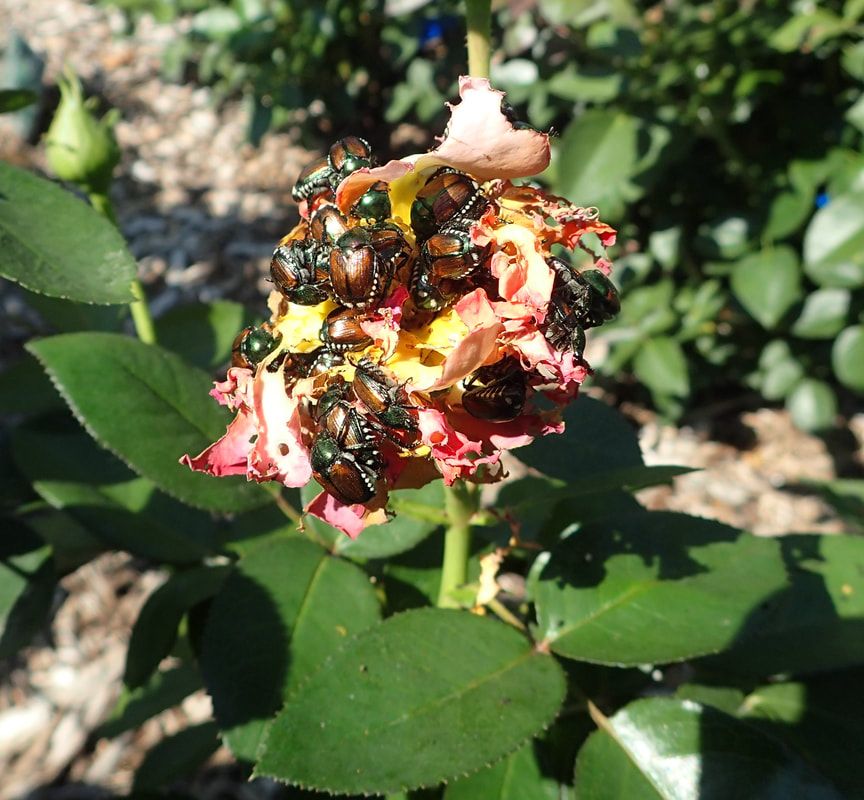
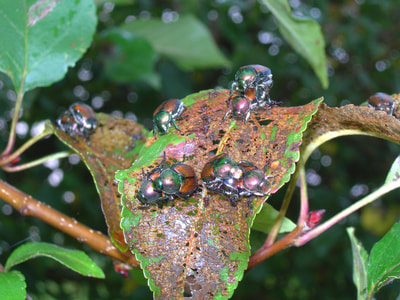
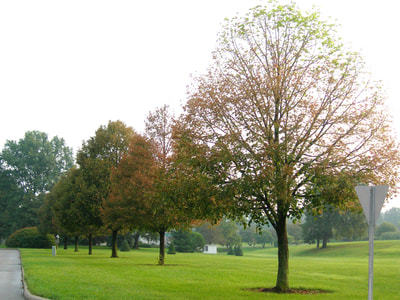
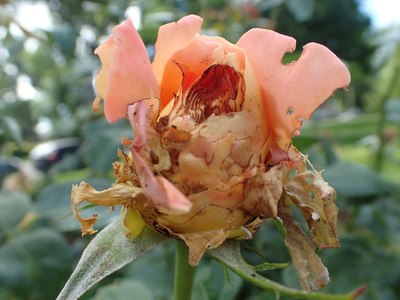
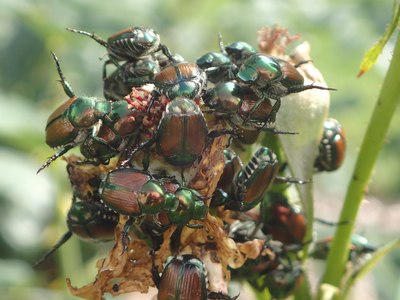



 RSS Feed
RSS Feed
